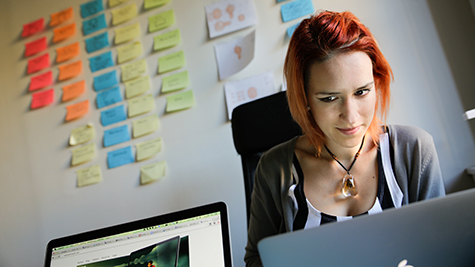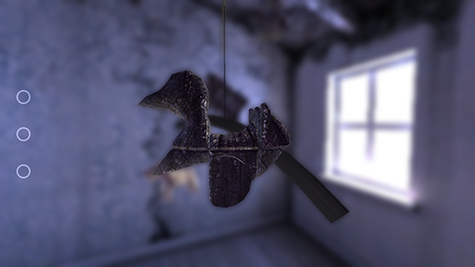“If we are really lucky, in the span of our careers, we’ll make maybe 20 games,” he said at Casual Connect USA 2014. “I think that it is important for everyone to ask themselves what they want those games to be. And years from now, when you reflect back on your career, are you going to be more proud of your work on Farmville 4 or that little weekend project that you spent 48 hours on and have one friend been touched so closely that they cried?”
Dr. Rob Jagnow, the founder and CEO of Lazy 8 Studios, came to a career in the games industry almost by accident. Although he enjoyed games as much as anyone, he had a different career path in mind. While getting a PhD at MIT, he interned at Pixar and intended to get a full-time job on graduation. But by then, he was in a relationship and needed a job that would allow him to stay in Boston. He found a job with Demiurge Studios and discovered he enjoyed the challenge of game development as he discovered the potential of games as an interactive art form. He worked on a variety of projects for Demiurge Studios, Gearbox, Kaos, EA, and WXP before deciding to found his own company.

More Innovation To Come
Jagnow believes that as of yet game designers have explored only a tiny space of what is possible in games. His desire to push the envelope and explore new spaces is what keeps him going in the industry. He is intrigued by creative spaces that are visually oriented, so he might have chosen a career in movies or music video production if he hadn’t found his creative space in games.
He admits he had no real idea what he was doing when he founded Lazy 8 Studios in 2008. But he had been dabbling with the game concepts in Cogs and wanted to see if he could succeed as an entrepreneur. This eventually become Lazy 8 Studios’ flagship game. His academic background at MIT gave him a significant advantage because he was able to use his knowledge of high-end shader development to give Cogs much more visual polish than the typical casual game. Another advantage came from other indie developers. He says, “I quickly fell in with a group of indie developers who were unbelievably generous in sharing their wisdom. When I got lost, they would point me in the right direction.”

Cogs won the grand prize at the Indie Game Challenge in 2010. The $100,000 award gave Jagnow the freedom to take even greater creative risks. With this safety net, he had the confidence he needed to create Extrasolar, a project he is extremely proud of.
Jagnow has other passions besides games. He is heavily involved in fitness: running, lifting, and racing. He spends at least 90 minutes a day outside, running or walking the dog. By scattering breaks through the day, he is able to step away from his desk to see the larger perspective. He admits, “I solve a surprising number of creative and technical challenges while I’m not in front of my computer.” He is also an amateur photographer; his current project is to take one photograph a day. He feels that his passions for photography and orienteering came together beautifully in Extrasolar, Lazy 8 Studios’ latest game.

For his gaming, Jagnow prefers the PC. He has just recently finished Escape Goat 2, which he tested on the PC before launch, and he calls it an amazing game with great puzzles and a surprising number of mechanics. He does own Xbox 360 and Wii, but nothing in the current generation of consoles; in his home, consoles just don’t get much use. For mobile gaming, he likes Android, feeling the open platform and the less rigidly controlled OS has allowed the UI, tools, and ecosystem to evolve more quickly than iOS.
A Savvy Marketplace
In the next several years, Jagnow sees players growing more and more savvy, and demanding more from games. He expects free-to-play to continue dominating the market, but players looking for premium experiences will begin looking elsewhere, sustaining other niches. Big companies will lose market share if they refuse to innovate, but there will be some surprise mega-hits from indies.

Even more interesting to Jagnow is the question of where the games industry will be in 10 years. By that time, he believes platform dependencies will start to break down and the Web (with WebGL and potentially new Web compatible programming languages) will become an increasingly dominant platform for games that can run on almost any device.









